What Kind of Cars Do Women Actually Want?

On International Women’s Day, the Kia EV9 was announced as the “Supreme Winner” of the Women's Worldwide Car of the Year (WWCOTY) 2024. However, saying that this is the vehicle women most desire — let alone are willing to spend money buying — is probably a stretch.
Despite often being framed as though there’s some colossal demographic consensus, plenty of awards are effectively decided by a small number of handpicked judges that are supposed to represent the larger group. In this case it was 75 female automotive journalists from 52 different countries. That effectively precludes any vehicles that are not intended for the global market, with winners resulting from the opinions of a limited number of industry experts.
These women also decided that the Volvo EX30 was the “Best Family Car,” the BMW 5 Series served as the “Best Large Car”, and that the Volkswagen Amarok ended up being the “Best 4x4 or Pick-up.” The Aston Martin DB12 also received an award for “Best Exclusive Car,” even though I’ve never seen a woman driving an Aston Martin in my entire life.
"This year's election was particularly difficult due to the excellent level of all the candidates," stated Marta Garcia, executive president of WWCOTY. "Each of the finalists had sufficient merit to win the trophy. The Kia EV9 has won out over its rivals because it is a vehicle capable of satisfying the needs of consumers everywhere."
The EV9 apparently took away the win due to the fact that the model was feature rich and allegedly brought electric vehicles to a point where at least some of the judges believed it surpassed combustion vehicles in terms of overall convenience and capability. Women also seemed to appreciate its novel design and how the cabin was oriented.
“The Kia EV9 is truly a game-changer for electric vehicles. It will be the vehicle we look back on down the road and say ‘that is when EVs became truly affordable, user-friendly and desirable for all consumers’. No other vehicle has taken the same risks and pushed the design and engineering boundaries to the same limit,” said Tanya Gazdik.
Details about why the other models were selected were rather sparse. However, common themes seemed to be the availability of electrified powertrains, engaging designs, and a bevy of features. Though it was hardly a buffet of information.
Perhaps there is more to learn if we slather on some more data about female motorists. According to S&P Global Mobility, Buick was the brand that had the highest percentage of female customers with a 55-percent share at the start of 2023. While Mitsubishi, Mini, and Lexus also had a majority of women customers, the difference was so slight that it could be attributed to even the slightest margin of error.
Sadly, it’s harder to break gender preference down by model. Most of the relevant studies are several years old, frequently rope in the European market, and typically list high-volume models that are purchased by just as many men (e.g. Honda Civic). However, assuming their purchasing trends have remained consistent since roughly 2018, there are a few obvious takeaways. Women tend to buy smaller vehicles boasting lower MSRPs than their male counterparts. As of 2021, they were also more prone to head to the used market and decidedly less inclined to buy something brand new.
In 2019, Cars.com published a list of vehicles most frequently purchased by each gender. But there was so much overlap that it’s really only worth focusing on the differences. Men gravitated toward pickups, larger SUVs, and the occasional muscle cars. Meanwhile, women ignored trucks and frequently opted for something less financially cumbersome. Both liked crossovers and high-volume Japanese sedans. But women tended to prefer their crossovers a tad smaller and didn’t mind having the occasional Nissan Altima or Chevrolet Malibu in the driveway — likely because they tend to sticker rather low vs the competition.
Then there are the models that don’t exactly top the sales charts but are culturally synonymous with women. Despite only having a slight bend toward female buyers globally, Mini products are often seen as feminine and are overwhelmingly bought by women in places like China. At one point, the brand was seeing an 80 percent breakdown in favor of ladies living in Central Asia and started worrying it might be a problem.
Back in the United States, we watched Subaru accomplish the inverse by turning female customers into a boon. Noticing a declining market share in the 1990s, Subaru elected to re-target the niche markets that offered it secure footing upon its regional launch. This just meant focusing on outdoorsy types with a penchant for smaller vehicles.
Back then, I knew several female couples that exclusively owned Subaru products. Today, just about every female driver I know sees it as a reputable brand with a quality ethos. It’s invariably mentioned whenever they ask me about what their next vehicle should be. My assumption is that this has been the result of smart packaging and clever marketing. Subaru also didn’t turn away male customers, even courting them through its involvement with motorsport, with Subaru’s North American volumes absolutely exploding after the 1990s.
Despite numerous data sets suggesting that a majority of car brands skew toward having male buyers, Cars.com released a 2019 report stipulating that roughly 62 percent of all car buyers were female. It likewise asserted that over 85 percent of all vehicle purchases made in the United States were meaningfully influenced by a woman.
However there doesn’t really seem to be any grand consensus regarding what women like. But it’s not for a lack of trying and numerous manufacturers have engaged in design studies hoping to cater to female tastes. That said, those vehicles don’t have a good track record of staying on the market.
In the early 1900s, the Broc Electric Vehicle Company was marketing some of the earliest all-electric vehicles to women. The assumption was that ladies would have an easier time operating its basic controls and could use the small conveyance as an urban runabout. However, the concept didn’t last for long and the brand died in 1916.
The company probably should have known better. The Baker Motor Vehicle Company tried something similar years earlier and pivoted hard toward marketing to women (particularly upper-crust ladies) in its last gasps. Despite receiving healthy amounts of praise for offering novel designs that were praised as cleaner to operate and easier to maintain than combustion models, the company went defunct in 1914.
In the post-war period, we saw the 1955 Dodge La Femme. Based on the Custom Royal Lancer, the vehicle was little more than an appearance package designed to cater to cliched notions of femininity. It was an abject failure for the company. But GM would attempt something similar every so often.
Over a generation later, Volvo tried its hand by assembling a team of eight female employees from different departments that would oversee prototypes the company was working on. While we cannot say exactly how much their input informed individual models, the concept of Volvo’s “Female Customer Reference Group” actually stuck around after being established in the 1980s.
Sadly, the only car we know for certain where the female crew was heavily involved in planning likewise ended up going nowhere. In 2001, Volvo was lauded for having women involved in the design process and tasked itself with developing a concept car using its all-female team. While small, the group focused on market research to determine what women most wanted from a vehicle and set to work. The public was made aware of the program on International Women’s Day in 2003 and the plan was to unveil the “ Volvo Your Concept Car” (YCC) at the 2004 Geneva Auto Show.
Despite very obviously being a concept vehicle reminiscent of the Volvo Safety Concept Car (SSC), the YCC has loads of intelligent solutions men likely wouldn’t have considered. Headrests had indentations to accommodate pony tails, you could refill the window washer fluid without opening the hood, doors opened automatically, and the car was loaded up with clever storage solutions made at the expense of traditional automotive design. But the YCC never made it to production due to it playing host to technologies that would have made it quite expensive. In the aftermath, Volvo made it pretty clear that it was always supposed to be a concept vehicle. However, much of its novel features have become standard equipment on many modern automobiles.
We also learned that the female team that designed the vehicle never really wanted to make something that appealed specifically to females, even though the marketing and media response often framed the YCC as a car for women. The true goal was to have these women design the best car possible for all drivers, provided they were among them, and that’s probably the most important thing to take away from this entire article.
While there are certainly models that appeal to women, ladies don’t appear to be any more brand loyal than males and actually look a tad more pragmatic when it comes time to actually buy something. Despite likewise being susceptible to targeting advertisements, women don’t seem to care as much about aspirational models and are tougher to upsell. If they’re not positive they’ll need the extra space, they’ll typically opt for something smaller with a lower price tag and are largely disinterested in juicy specifications so long as the test drive feels right.
I can't believe it took us over 100 years to determine women basically want all the same things men do minus the spec sheet.
[Images: Kia; Dodge; Volvo]
Become a TTAC insider. Get the latest news, features, TTAC takes, and everything else that gets to the truth about cars first by subscribing to our newsletter.

A staunch consumer advocate tracking industry trends and regulation. Before joining TTAC, Matt spent a decade working for marketing and research firms based in NYC. Clients included several of the world’s largest automakers, global tire brands, and aftermarket part suppliers. Dissatisfied with the corporate world and resentful of having to wear suits everyday, he pivoted to writing about cars. Since then, that man has become an ardent supporter of the right-to-repair movement, been interviewed on the auto industry by national radio broadcasts, driven more rental cars than anyone ever should, participated in amateur rallying events, and received the requisite minimum training as sanctioned by the SCCA. Handy with a wrench, Matt grew up surrounded by Detroit auto workers and managed to get a pizza delivery job before he was legally eligible. He later found himself driving box trucks through Manhattan, guaranteeing future sympathy for actual truckers. He continues to conduct research pertaining to the automotive sector as an independent contractor and has since moved back to his native Michigan, closer to where the cars are born. A contrarian, Matt claims to prefer understeer — stating that front and all-wheel drive vehicles cater best to his driving style.
More by Matt Posky
Latest Car Reviews
Read moreLatest Product Reviews
Read moreRecent Comments
- Bd2 Lexus is just a higher trim package Toyota. ^^
- Tassos ONLY consider CIvics or Corollas, in their segment. NO DAMNED Hyundais, Kias, Nissans or esp Mitsus. Not even a Pretend-BMW Mazda. They may look cute but they SUCK.I always recommend Corollas to friends of mine who are not auto enthusiasts, even tho I never owed one, and owned a Civic Hatch 5 speed 1992 for 25 years. MANY follow my advice and are VERY happy. ALmost all are women.friends who believe they are auto enthusiasts would not listen to me anyway, and would never buy a Toyota. They are damned fools, on both counts.
- Tassos since Oct 2016 I drive a 2007 E320 Bluetec and since April 2017 also a 2008 E320 Bluetec.Now I am in my summer palace deep in the Eurozone until end October and drive the 2008.Changing the considerable oils (10 quarts synthetic) twice cost me 80 and 70 euros. Same changes in the US on the 2007 cost me $219 at the dealers and $120 at Firestone.Changing the air filter cost 30 Euros, with labor, and there are two such filters (engine and cabin), and changing the fuel filter only 50 euros, while in the US they asked for... $400. You can safely bet I declined and told them what to do with their gold-plated filter. And when I changed it in Europe, I looked at the old one and it was clean as a whistle.A set of Continentals tires, installed etc, 300 EurosI can't remember anything else for the 2008. For the 2007, a brand new set of manual rec'd tires at Discount Tire with free rotations for life used up the $500 allowance the dealer gave me when I bought it (tires only had 5000 miles left on them then)So, as you can see, I spent less than even if I owned a Lexus instead, and probably less than all these poor devils here that brag about their alleged low cost Datsun-Mitsus and Hyundai-Kias.And that's THETRUTHABOUTCARS. My Cars,
- NJRide These are the Q1 Luxury division salesAudi 44,226Acura 30,373BMW 84,475Genesis 14,777Mercedes 66,000Lexus 78,471Infiniti 13,904Volvo 30,000*Tesla (maybe not luxury but relevant): 125,000?Lincoln 24,894Cadillac 35,451So Cadillac is now stuck as a second-tier player with names like Volvo. Even German 3rd wheel Audi is outselling them. Where to gain sales?Surprisingly a decline of Tesla could boost Cadillac EVs. Tesla sort of is now in the old Buick-Mercury upper middle of the market. If lets say the market stays the same, but another 15-20% leave Tesla I could see some going for a Caddy EV or hybrid, but is the division ready to meet them?In terms of the mainstream luxury brands, Lexus is probably a better benchmark than BMW. Lexus is basically doing a modern interpretation of what Cadillac/upscale Olds/Buick used to completely dominate. But Lexus' only downfall is the lack of emotion, something Cadillac at least used to be good at. The Escalade still has far more styling and brand ID than most of Lexus. So match Lexus' quality but out-do them on comfort and styling. Yes a lot of Lexus buyers may be Toyota or import loyal but there are a lot who are former GM buyers who would "come home" for a better product.In fact, that by and large is the Big 3's problem. In the 80s and 90s they would try to win back "import intenders" and this at least slowed the market share erosion. I feel like around 2000 they gave this up and resorted to a ton of gimmicks before the bankruptcies. So they have dropped from 66% to 37% of the market in a quarter century. Sure they have scaled down their presence and for the last 14 years preserved profit. But in the largest, most prosperous market in the world they are not leading. I mean who would think the Koreans could take almost 10% of the market? But they did because they built and structured products people wanted. (I also think the excess reliance on overseas assembly by the Big 3 hurts them vs more import brands building in US). But the domestics should really be at 60% of their home market and the fact that they are not speaks volumes. Cadillac should not be losing 2-1 to Lexus and BMW.
- Tassos Not my favorite Eldorados. Too much cowbell (fins), the gauges look poor for such an expensive car, the interior has too many shiny bits but does not scream "flagship luxury", and the white on red leather or whatever is rather loud for this car, while it might work in a Corvette. But do not despair, a couple more years and the exterior designs (at least) will sober up, the cowbells will be more discreet and the long, low and wide 60s designs are not far away. If only the interiors would be fit for the price point, and especially a few acres of real wood that also looked real.



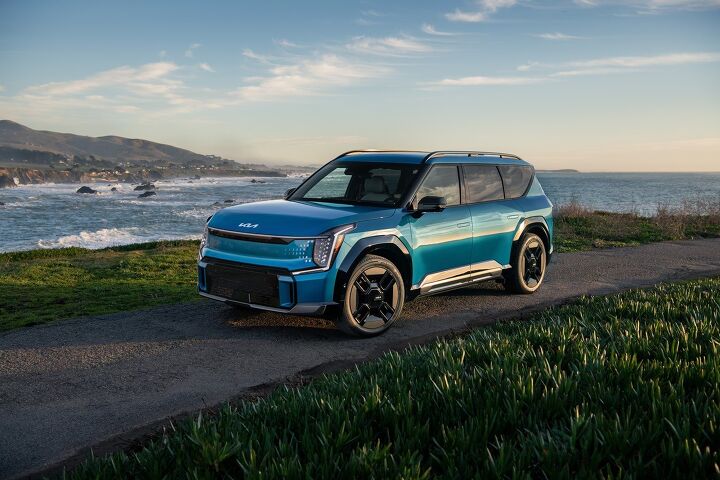



















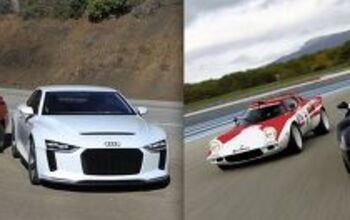
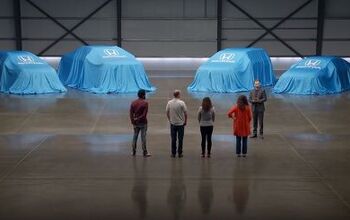
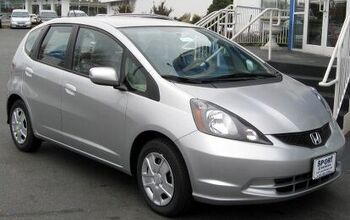







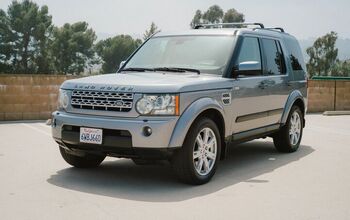



Comments
Join the conversation
How was Camry not once mentioned here? Just goes to show what the type of naked men here actually know about women.
"Women represent 50 per cent of the drivers on the road and are said to decide the majority of vehicle purchases.
Yet when they get behind the wheel there is nowhere to put a purse."